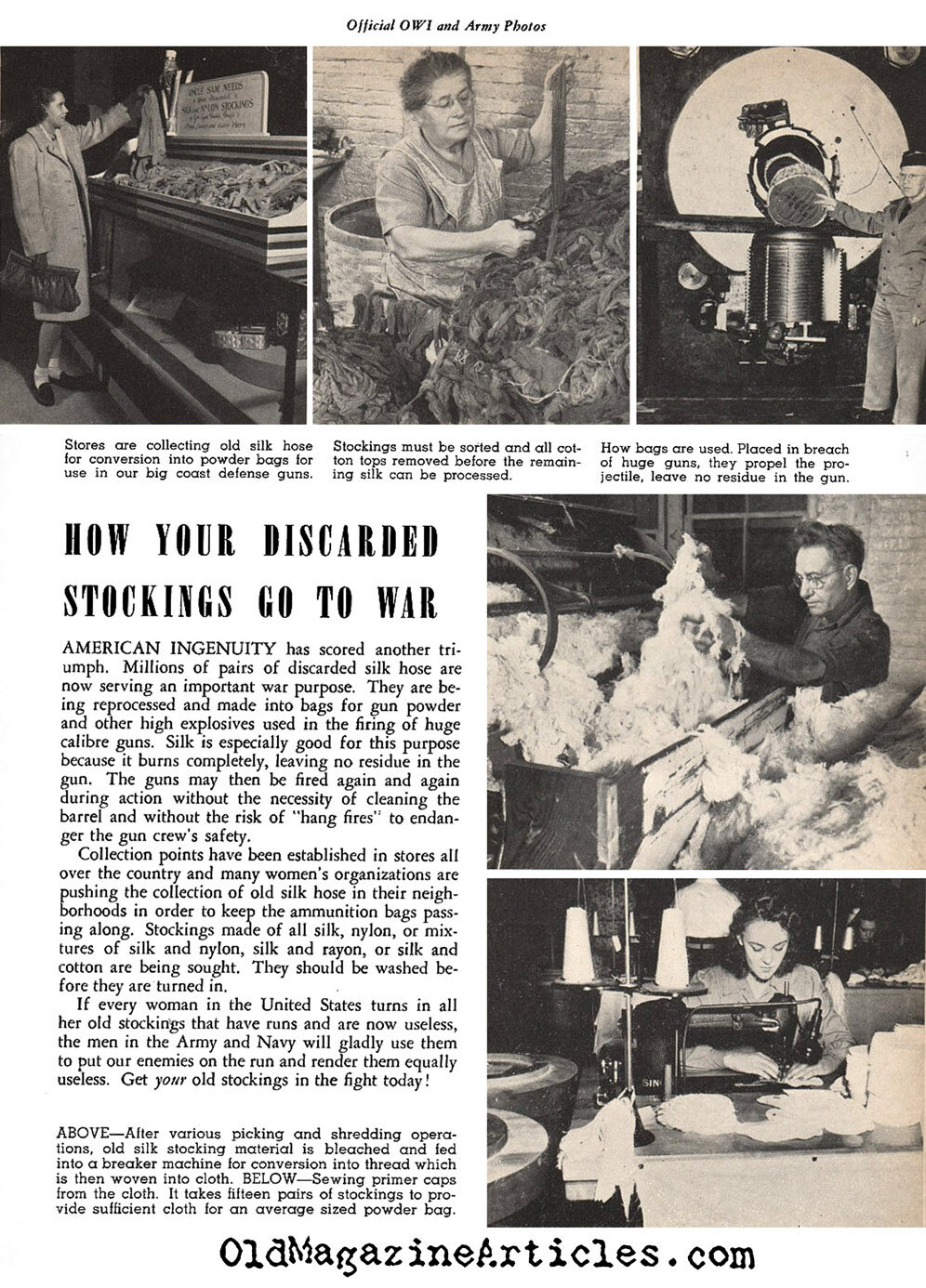World War II, one of the biggest conflicts the world has ever seen, impacted most people around the world on a daily basis. While some countries suffered more than others, most of them had to ration products that were used on a daily basis. This meant that women, who were encouraged to put their best face forward for their fighting men, had to become extra resourceful when it came to beauty. Here are five ways they got around the war shortages to keep their beauty regime.
1. Stocking Substitutes
Before the war, no woman was seen without a pair of stockings. Silk were the rage before the late 1930s, and after nylons were introduced, they became the new standard due to the fact that they didn’t shrink. But as Japan was one of the major suppliers of silk, the stocking business came to a halt when trade routes shut down. Any silk left was used for things like parachutes and powder bags. Silk stockings’ nylon cousins were also used to make rope stronger and to supplement rubber.

As a result, women donated most of their used stockings and saved a pair or two for very special occasions. To mimic the look, women often wore leg make-up, which is like a type of self-tanner. They would also use an eyebrow pencil and paint a “seam” on the back of their legs to make it appear as if they were wearing hosiery.

2. Shaving with a Pumice Stone
In Europe, where make-up products were in even shorter supply, shaving a woman’s legs with a razor was sometimes out of the question. Because stockings were being rationed (as was fabric, making hemlines shorter), many women saw it as necessary to try to keep their legs smooth. In the absence of razors, many women would attempt to buff away the hair by using a pumice stone.
3. Shampoo
Shampoos and conditioners were in short supply during the war years; so many women opted for more natural ways to clean their hair. A tablespoon and baking powder was one way to attempt to control the grease. To keep their hair looking shiny, may women did things like putting raw eggs or vegetable oil on their hair.

4. Making Make-Up at Home
While not all materials used in cosmetics were being rationed, make-up companies were only making around a quarter of their pre-war amount. As a result, many women resorted to making their own make-up at home, from mixing coal dust with Vaseline for an at-home mascara, using rabbit skin for foundation powder puffs and using beetroot as a lip stain.
5. Clothing Shortages
All over the world, production of clothing came to a grinding halt. This was to ensure that all the money used for clothing would go to the war effort and that the troops would get all of the money used for clothing. In the UK, The Utility Scheme was introduced, which focused on only creating clothing that would wash and wear well as well as keeping the manufacture of clothing to minimum. These articles of clothing were regulated in price (the price of clothing shot up dramatically at the outbreak of the war, and this scheme partly sought to remedy that), but had to be bought in part with ration coupons.

Source: Lane Bryant Shoe catalog from Indiana, USA
The Utility Scheme set the rules on who was allowed to make and sell clothing and how much could be allotted to the general public. Another scheme, called the Austerity Scheme, set rules on superfluous materials on clothing to ensure that decorative materials were also rationed. This included a ban on:
- Pleated skirts
- Metal and leather buttons
- Long trousers on boys under 13
- Dresses with more than two pockets
- Jackets and coats with more than three pockets
- Braiding, lace and embroidery
- Cuffed trousers
- Tail coats
In the United States, similar programs were under way that restricted things like hem circumferences, waistbands, buttons and cuffs and ruffling. Likewise, civilians were not permitted to purchase more than three pairs of leather shoes a year.
www.annainwonderland.co.uk Lifestyle and Beauty Blog
http://www.youtube.com/TheAnnainWonderland YouTube Channel
www.anna-scanlon.com








